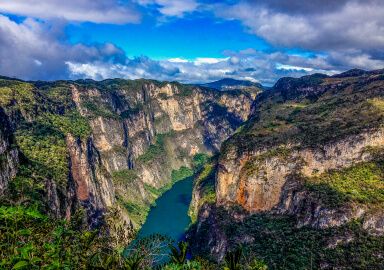Yellowtail Amberjack
Prized for its strong fight when hooked and its high-quality flesh, yellowtail amberjack is a large, fast predator of subtropical and tropical seas.
View 30 listings
30
listings
–
price starting from
6
countries
–
to the nearest trip
Where and When?
Yellowtail amberjack are found in temperate to subtropical waters around the world, often near rocky reefs, islands, and offshore structures where prey is abundant. Their geographical range includes the Pacific and Indian Oceans. Some of the best places to fish for yellowtail amberjack include, but aren’t limited to, the Catalina and Coronado Islands of California, the Bay of Islands and White Island in New Zealand, the southern and eastern coasts of Australia, as well as Japan and South Africa around Cape Town and False Bay.
These fish typically inhabit waters between 20 and 250 meters (65 to 820 feet) deep and are known for their migratory behavior, following warm ocean currents and seasonal prey movements. Peak fishing seasons generally align with warmer water temperatures, which attract the fish closer to shore. Depending on the location, the best time to fish for yellowtail amberjack can range from the summer months to late fall, offering a wide range of opportunities for anglers to target these powerful, fast-swimming fish.
About Yellowtail Amberjack
Yellowtail amberjack (Seriola lalandi), also known as California yellowtail, hamachi or buri in Japan, and kingfish in Australia and New Zealand, are large, fast-swimming fish. They can grow up to 2 meters (6.6 feet) in length and weigh as much as 80 kg (176 lbs), though most commonly they are around 1 to 1.5 meters (3.3 to 5 feet) and weigh between 15 to 40 kg (33 to 88 lbs). They are easily recognized by their elongated, streamlined bodies, bluish-green to brownish backs, and silvery-white bellies. A distinctive yellow stripe runs from their snout to their tail along their flanks, and their caudal (tail) fin is bright yellow, which gives the species its name.
Yellowtail amberjack are carnivorous predators that feed primarily on smaller fish, such as sardines, mackerel, and anchovies, as well as squid and other invertebrates. They are opportunistic hunters and often hunt in schools, using their speed and agility to chase down prey. Yellowtail are known to feed both near the surface and at mid-depths, depending on the availability of food. Their feeding habits make them highly sought after by both commercial and recreational anglers due to their aggressive strikes and hard fighting.
Spawning typically occurs in the summer months, though timing can vary depending on the region. They spawn offshore; eggs hatch within a few days, depending on water temperature. Once hatched, the larvae are carried by ocean currents and develop in the planktonic stage before becoming juveniles. Juveniles often stay near floating objects, such as seaweed or debris, for protection until they mature and move into deeper waters.
How to Catch?
Catching yellowtail amberjack is as thrilling as it is challenging. These fish are typically found near rocky reefs, pinnacles, and offshore structures, which provide ideal environments for them to ambush prey. To catch yellowtail amberjack, anglers often use live bait, that they either drop into the water near structures, or trolled behind a boat. The key is to ensure the bait is lively and moving, as yellowtail amberjack are visual predators and will chase fast-moving targets. Another method that is particularly effective in deeper waters where yellowtail often school is jigging. Retrieving the jig quickly in an erratic motion, to mimic the movement of a fleeing baitfish and entice the fish to strike.
When targeting yellowtail, anglers should be prepared for a hard fight. These fish are known for their strong initial runs and will often try to dive back into the structure. Use a strong rod and reel setup with a heavy line (typically 30-50 lb test). Yellowtail are most active during early mornings and late afternoons, when they feed more aggressively. Fishing during slack tides, when water movement is minimal, can also be productive since the fish may be less wary and more likely to strike. Whether fishing from a boat or shore, targeting areas with strong currents and deep underwater structures increases the chances of success.







